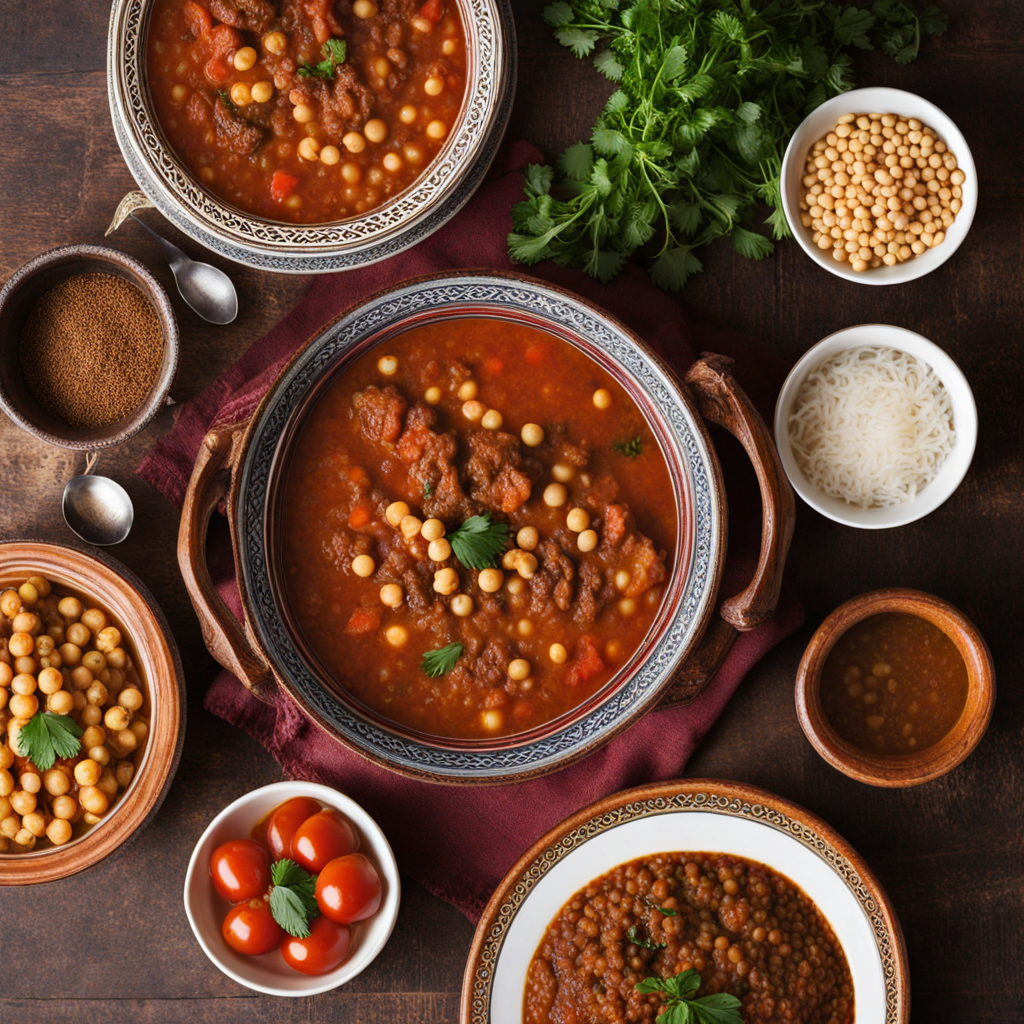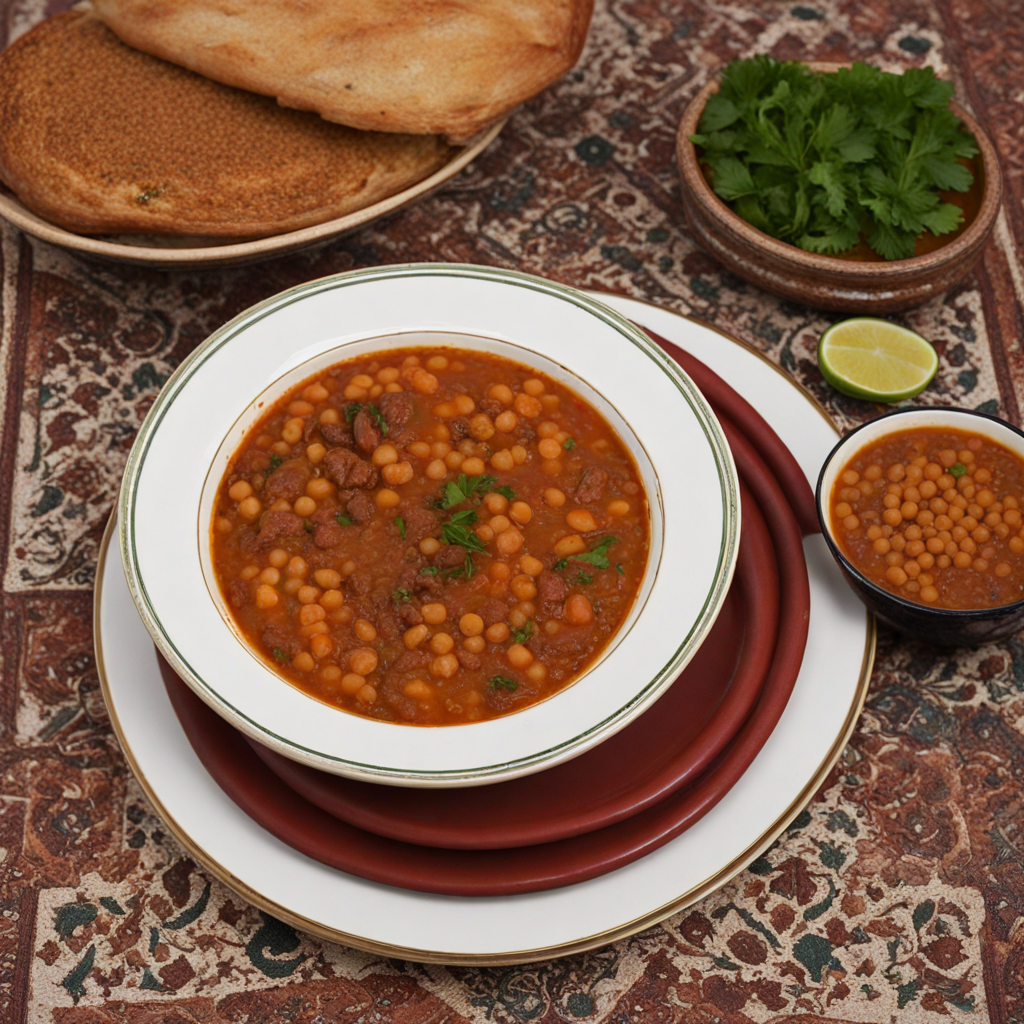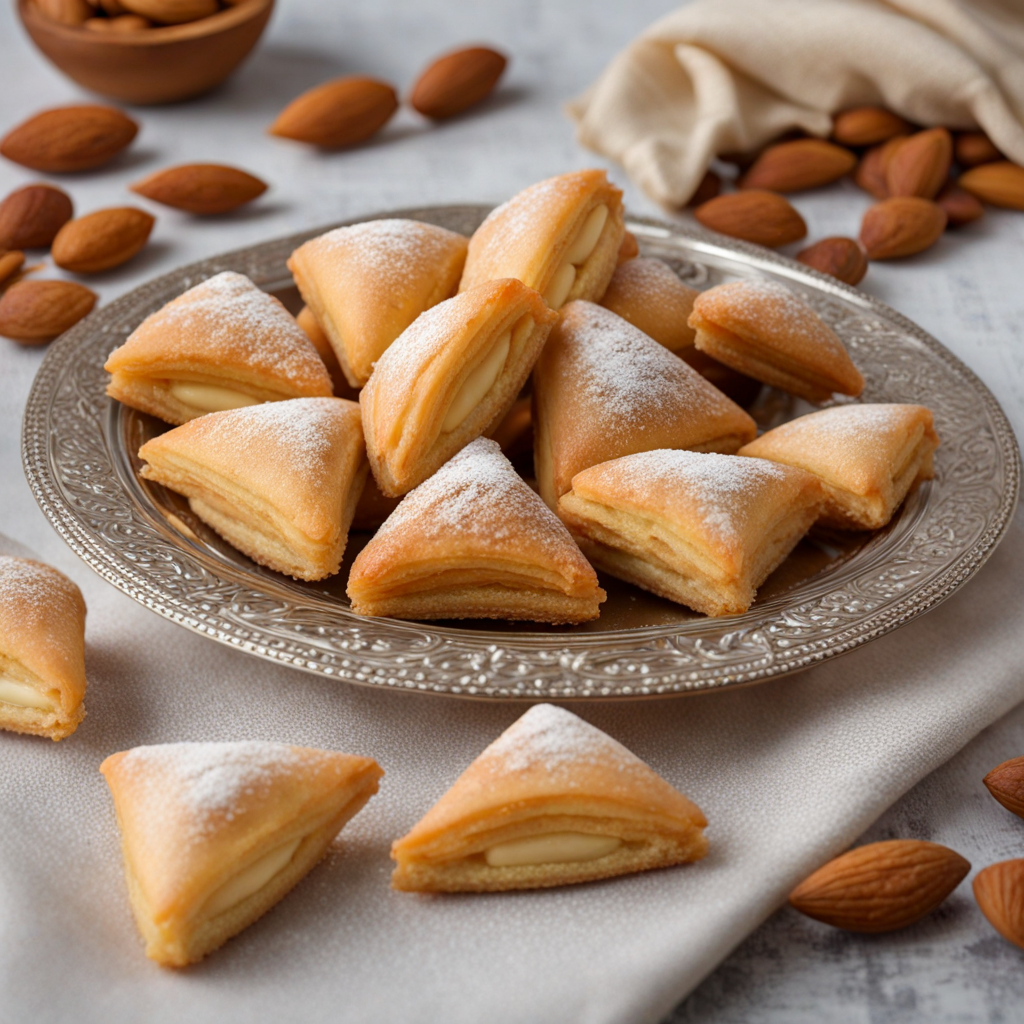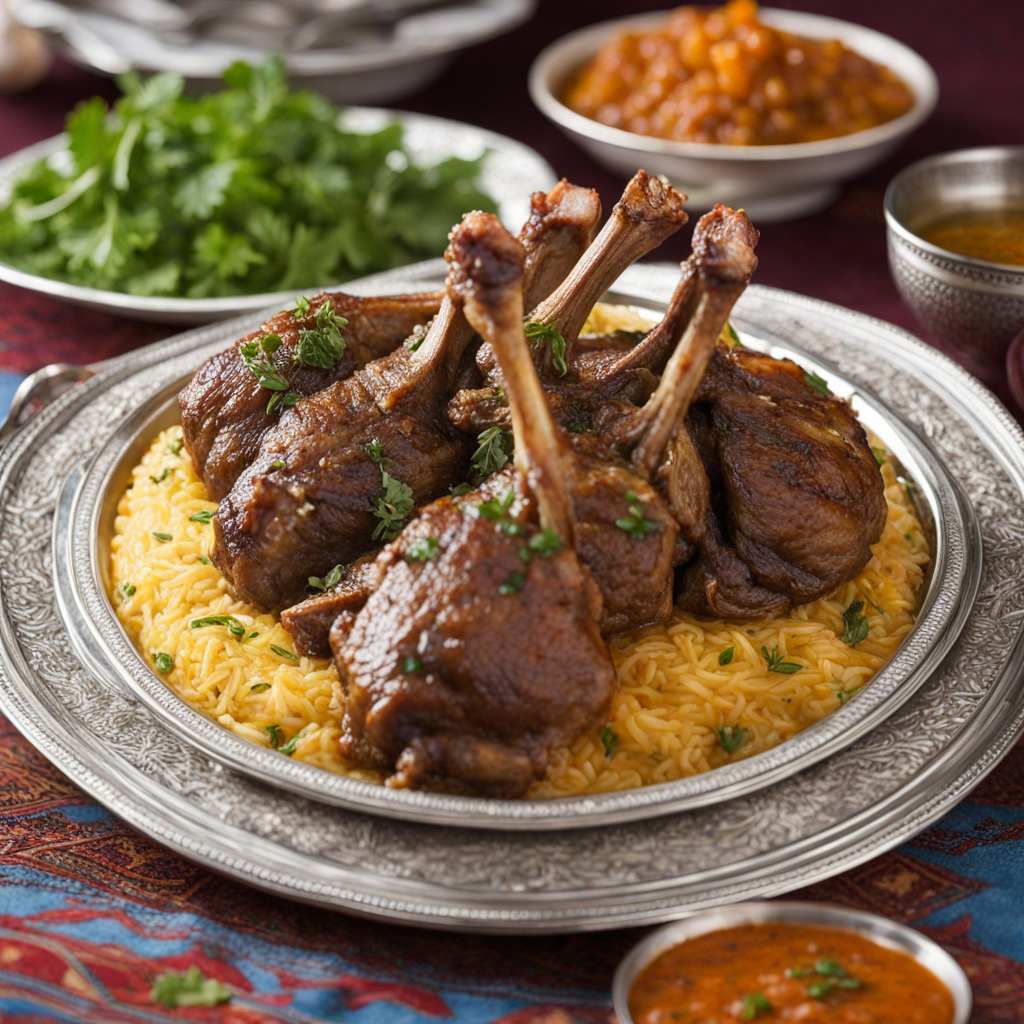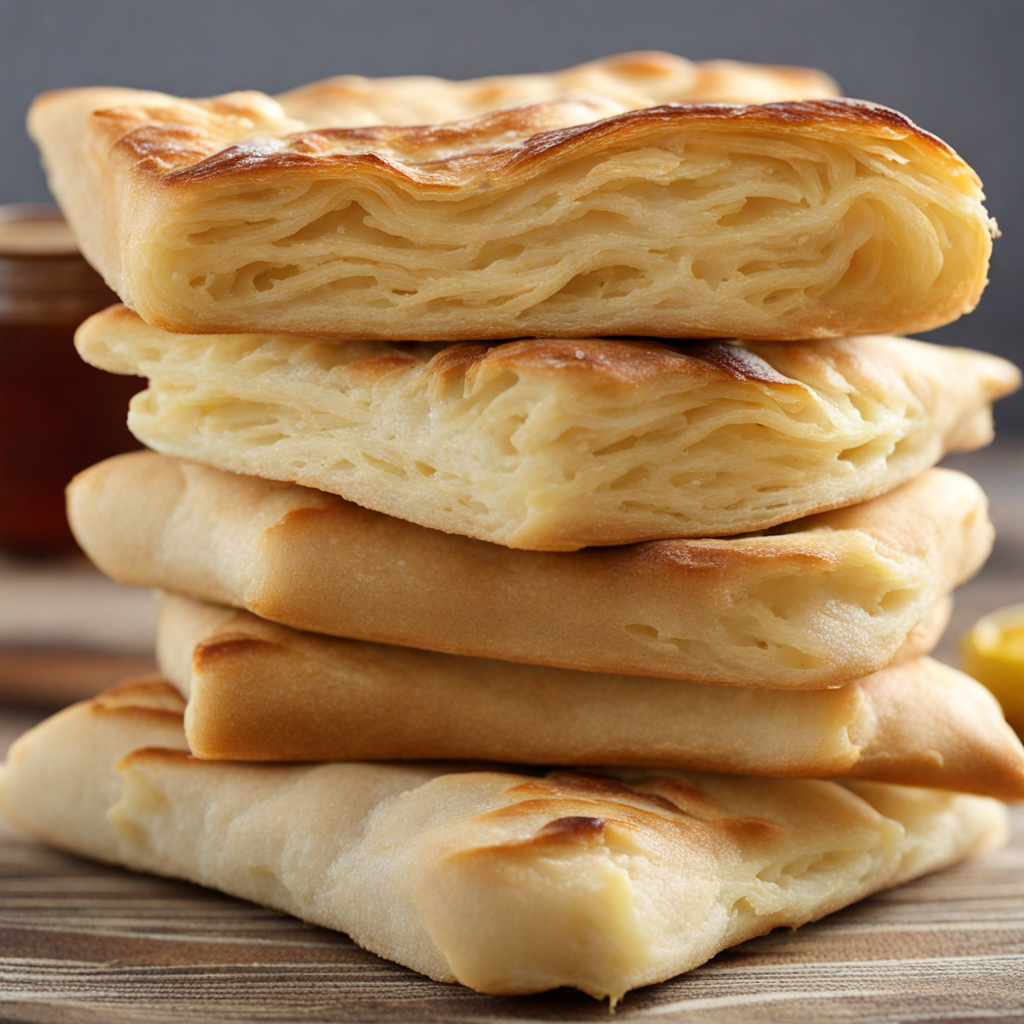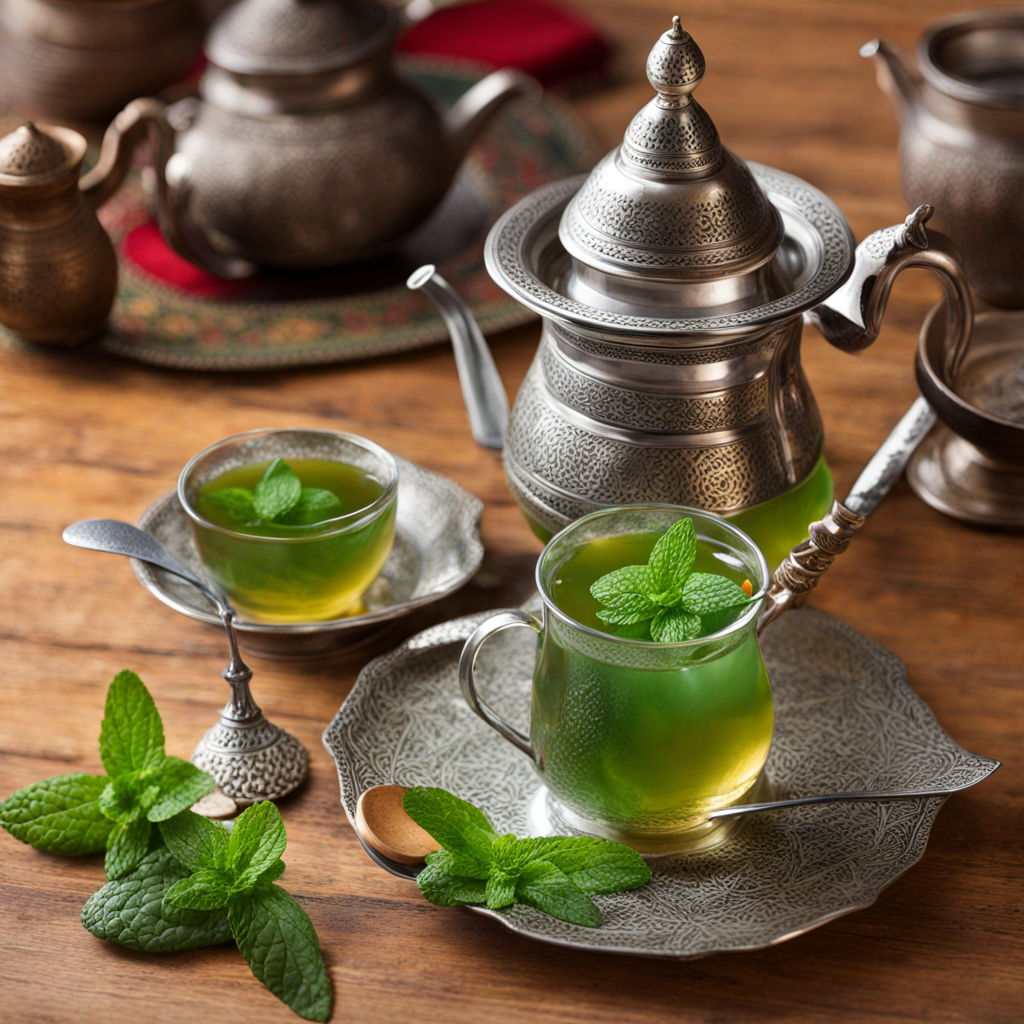Harira
Harira is a traditional Moroccan soup that embodies the rich culinary heritage of the country. It is a vibrant and hearty dish, typically enjoyed during Ramadan to break the fast, but its delightful flavors make it a beloved option year-round. The base of Harira is a fragrant blend of tomatoes, lentils, chickpeas, and a variety of spices such as cumin, coriander, and cinnamon. This harmonious mix creates a warming and comforting experience, perfect for those chilly evenings or when you're craving something nourishing. What sets Harira apart is not just its ingredients but also the technique used to prepare it. The soup is often enhanced with fresh herbs like cilantro and parsley, which add a burst of freshness. Additionally, it can be thickened with a mixture of flour and water, giving it a silky texture that coats the palate beautifully. The dish is often served with dates and sweet pastries, adding a touch of sweetness that complements the savory elements of the soup. Each family may have its own twist on Harira, with variations that include different meats like lamb or beef, and some might even incorporate a squeeze of lemon for an extra zing. The overall experience of enjoying Harira is one of warmth and communal spirit, often shared among family and friends. With its complex flavors and aromas, Harira is not just a meal; it's a celebration of Moroccan culture and hospitality.
How It Became This Dish
The Rich History of Harira: Morocco's Heartwarming Soup Harira is more than just a dish; it is a symbol of Moroccan culture and hospitality. This traditional soup, characterized by its rich and flavorful ingredients, is deeply woven into the fabric of Moroccan life, particularly during the holy month of Ramadan. Its origins, cultural significance, and evolution over time reflect the diverse influences that have shaped Moroccan cuisine. #### Origins: A Culinary Mosaic The history of Harira can be traced back to the medieval era, where it is believed to have evolved from a blend of Arab, Berber, and Mediterranean culinary traditions. The term "Harira" itself is derived from the Arabic word "harir," meaning "silk," which reflects the soup's smooth, velvety texture. The introduction of various ingredients over centuries has given Harira its unique character. The soup likely gained prominence in the 8th century with the arrival of Arab settlers who brought with them their cooking techniques and spices. At the same time, the Berber tribes, the indigenous people of Morocco, contributed local herbs, legumes, and grains. The result was a dish that combined the heartiness of legumes with the aromatic spices of the Arab world. In its earliest forms, Harira was likely a simple lentil soup, but as trade routes expanded and Morocco became a melting pot of cultures, the recipe began to evolve. Ingredients like chickpeas, tomatoes, and fresh herbs, such as cilantro and parsley, were incorporated, giving the soup a distinct flavor profile. The addition of spices like cumin, cinnamon, and ginger further enriched the dish, reflecting Morocco's historical role as a crossroads for traders and travelers. #### Cultural Significance: A Dish for Every Occasion Harira holds a significant place in Moroccan culture, particularly as a staple during Ramadan. As the sun sets and the call to prayer echoes through the streets, families gather to break their fast with a bowl of this nourishing soup. Traditionally, it is served alongside dates and milk, symbolizing the joy of sharing a meal after a day of fasting. The act of preparing Harira is often a communal event, with family members coming together to chop vegetables and spice the broth, fostering a sense of unity and celebration. Beyond Ramadan, Harira is enjoyed year-round, often served at special occasions, such as weddings, religious festivals, and family gatherings. Its versatility allows for variations in ingredients based on regional preferences or seasonal availability, making it a beloved dish across the country. In cities like Marrakech and Fes, vendors sell steaming bowls of Harira from stalls, enticing passersby with its fragrant aroma. The soup is not just a meal; it is a ritual. The preparation of Harira can be seen as an art form, with each family possessing its own treasured recipe passed down through generations. These recipes often include personal touches, such as the addition of meat (usually lamb or beef) for a heartier version, or the use of specific spices that reflect the family's heritage. This personal connection to Harira adds to its cultural significance, making it a cherished dish that embodies the history and traditions of Moroccan families. #### Development Over Time: A Culinary Evolution As Morocco entered the modern era, the recipe for Harira continued to evolve, influenced by globalization and changing culinary trends. In the 20th century, the availability of canned tomatoes and other pre-packaged ingredients transformed the way Harira was prepared, allowing for quicker and more convenient cooking methods. However, traditionalists often maintain that the best Harira is made using fresh, locally sourced ingredients, honoring the timeless cooking techniques of their ancestors. The rise of tourism in Morocco also brought Harira to the attention of food lovers worldwide. Restaurants began offering their own interpretations of the soup, often adapting recipes to cater to international palates. While some chefs embrace traditional methods, others experiment with modern twists, such as incorporating fusion ingredients or presenting the dish in innovative ways. This blending of tradition and innovation highlights the dynamic nature of Moroccan cuisine and its ability to adapt to contemporary tastes. Moreover, the global interest in health and wellness has led to a renewed appreciation for Harira's nutritious qualities. Packed with protein from legumes and vitamins from fresh vegetables, Harira is not only delicious but also a wholesome option for those seeking a balanced diet. As people become more conscious of their food choices, Harira's reputation as a nourishing and satisfying meal has solidified its place in both Moroccan and international culinary landscapes. #### Harira Today: A Global Icon Today, Harira is celebrated not just in Morocco, but across the globe. It is often featured in international cookbooks and food blogs, showcasing the vibrant flavors and rich history of Moroccan cuisine. Cooking classes and culinary tours in Morocco frequently highlight Harira as a quintessential dish, allowing visitors to immerse themselves in the nation's culinary traditions. In Moroccan diaspora communities, Harira continues to serve as a link to cultural identity. Families maintain the tradition of preparing the soup, passing down recipes that evoke memories of home and heritage. During Ramadan, many expatriate Moroccans replicate the customs of their homeland, gathering to share Harira and uphold the values of togetherness and generosity. As the world becomes increasingly interconnected, Harira stands as a testament to the power of food to transcend borders and bring people together. Its rich history, cultural significance, and adaptability to changing times have cemented its status as a beloved dish both in Morocco and beyond. #### Conclusion: A Legacy of Flavor and Tradition The story of Harira is a reflection of Morocco's complex history, rich culture, and the enduring spirit of its people. From its humble beginnings as a simple lentil soup to its place as a cherished dish during Ramadan and beyond, Harira encapsulates the essence of Moroccan hospitality and the joy of communal dining. As we savor a bowl of Harira, we not only enjoy a delicious meal but also partake in a tradition that has been lovingly passed down through generations. In every spoonful, there is a taste of history, a dash of culture, and a warm invitation to gather, share, and celebrate the bonds that unite us all.
You may like
Discover local flavors from Morocco


